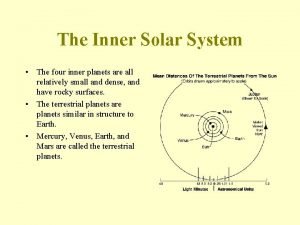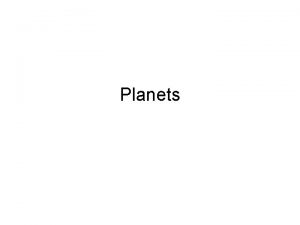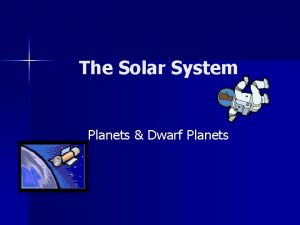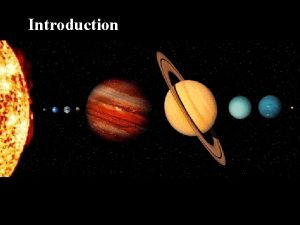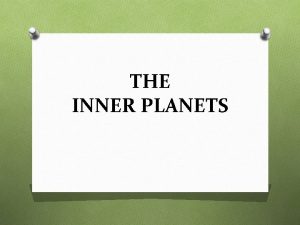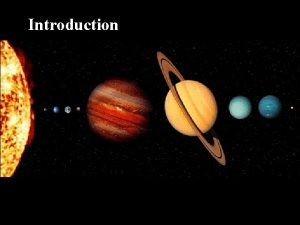The Solar System 1 star 8 planets several






- Slides: 6

The Solar System • 1 star • 8 planets • several dwarf planets • many moons • asteroids, comets, meteoroids


Formation of the Solar System Any theory to describe the formation of our Solar System must be consistent with these facts: 1. Each planet is isolated in space. 2. The orbits are nearly circular. 3. The orbits of the planets all lie in roughly the same plane 4. The direction the planets orbit around the Sun is the same as the Sun’s rotation on its axis. 5. The direction most planets orbit on their axes is the same as that for the Sun. 6. The direction of the planetary moon’s orbits is the same as that of the planet’s rotation. 7. The terrestrial planets are very different from the Jovian planets. 8. Asteroids are different from both types of planets. 9. Comets are icy fragments that don’t orbit in the ecliptic plane.

Nebular Theory for Solar System formation Our Sun and the planets began from a cloud of dust and gas (nebula) As the cloud contracts under its own gravity, the Sun is formed at the center. The cloud starts to spin and the smaller it contracts, the faster it spins. Conservation of angular momentum The cloud forms a flattened, pancake shape.

Condensation Theory for Planet Formation The gas in the flattened nebula would never eventually clump together to form planets. Interstellar dust (grain-size particles) lies between stars - remnants of old, dead stars. These dust grains form condensation nuclei - other atoms attach to them to start the “collapsing” process to form the planets in the gas cloud.

What happened next…. . • Solar nebula contracts and flattens into a disk. • Condensation nuclei form clumps that grow into moon-size planetesimals. • Solar wind from star formation blows out the rest of the gas. • Planetesimals collide and grow. • Growing planetesimals form the planets over about 100 million years. • The more massive proto-planets are also able to sweep up large amounts of gas to become the Jovian planets.






